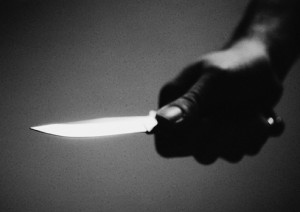I receive many requests from students and private persons to teach them to grapple. It is strange how many requests I receive from other martial artists to train them in the art of grappling. Now this is an honour to me but I always ask them the same question. Why do you want to grapple, what purpose would it serve you and what do you intend to do with the skills once taught? Many say that it is a good form of exercise others want to get into the cage fighting scene.
As a martial artist I strongly believe that everyone should learn the basics of grappling or groundwork as it is traditionally known. Not many fighters like going to the ground and many feel confident enough to win a fight standing up. This is often also a case of being overconfident in ones abilities.
It is great if all fights could be won standing up however there is always the possibility that this may not be the case. Now, many may disagree that fights do not often go to the ground but by being realistic you will realise that most fights do…you may get knocked down, slip and fall, trip, be tackled to the ground, be taken down MMA style, be thrown to the ground, be held hostage and forced to lay down, etc.
Now all of the above takes the fight to the ground. You may not always be in control of a situation and ultimately land up on the ground in one way or another. Also remember that you don’t always have to fight and you may go to the ground as a sign of surrendering or defeat. I strongly encourage everyone no matter what your level of skill may be, no matter how many fights you have won, no matter how big or strong you are or what Dan grading or years of training you may have, that you must have a basic knowledge of groundwork / grappling.
A skilled grappler/ground fighter can easily overcome most attackers and turn a situation over. A disadvantage could then be turned over to become an advantage.
Groundwork/grappling is an important skill that should be taught to all women and children. Females especially as this is the one place an attacker will always take them to……..the ground.
If it is a sexual attack then this is where a fight will end up with the victim either on their backs or stomachs face down in the dirt. That is why it is important that any martial artist have a basic knowledge as how to defend themselves off the ground. You need not be very skilful in grappling but a basic understanding of evading, controlling and manipulating an attacker could save your life and provide you with a window of opportunity to get away.
It is often perceived that a fight is lost once you are on your back on the ground or knocked to the ground. An attacker feels in control when the victim hits the dirt….this is where a basic understanding of the grappling arts can become a BIG surprise to any attacker. The overconfidence and belief of defeat on the side of the attacker can easily be swayed to their peril.
For you to create just one second for a window of opportunity is more than enough to turn things into your favour. This is where the most basic knowledge of ground fighting/grappling comes into play. Thus for any person out there interested in self defence please get a basic training session at least in grappling/ground fighting to empower yourself both on your feet and in the dirt .
Take care everyone and enjoy the dirt in your face and in your hair.
Grappling is fun…its one way to LOVE your attacker before you incapacitate them….
FIGHT HARD, FIGHT SMART BUT FIGHT DIRTY




